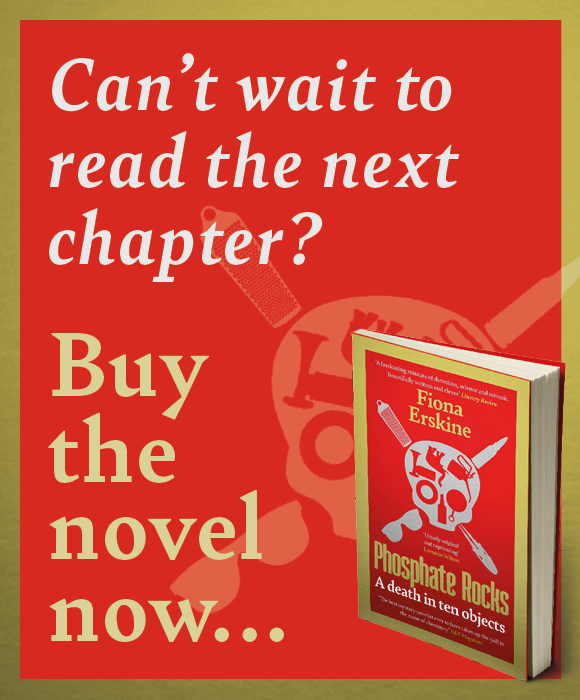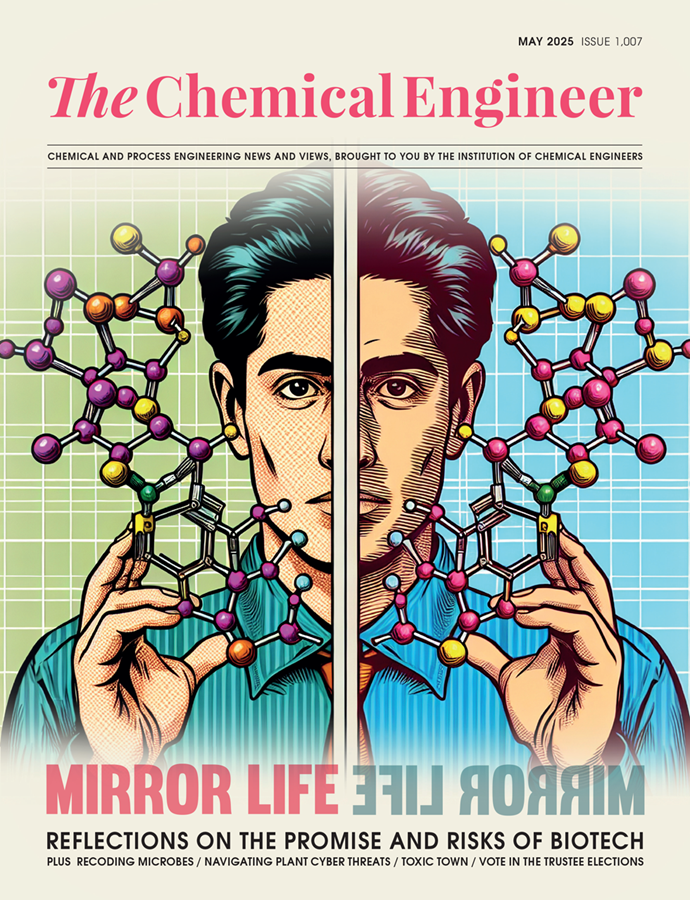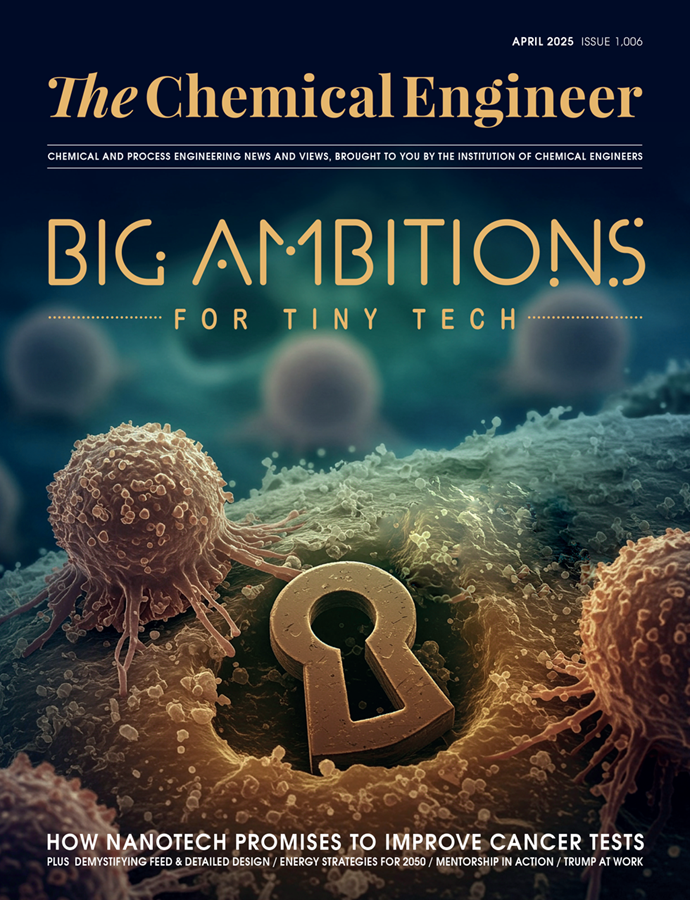Phosphate Rocks Chapter 6: Silver Bullet

In the police interview room, a telephone rings. Brrring. An old-fashioned bell, it echoes round the bare room. Detective Inspector Rose Irvine answers.
‘Yes?’ she barks and then frowns. ‘Yes, sir. Right away, sir.’
She puts down the receiver and checks her watch.
‘We’ll break for lunch,’ she says.
John steps out to breathe. He marches east to Lothian Road, dropping behind St Cuthbert’s into Princes Street Gardens where the path curves in the lee of the castle. Traversing the Mound, past Waverley Station, he looks up at the big clock over the North British Hotel and adjusts his watch as the One o’Clock Gun fires. Ignoring the pain from his arthritic hip, he continues to the top of the Calton Hill where Edinburgh unfolds before him: the Pentland Hills to the south, the Ochils to the north,and the silvery Firth of Forth snaking through a broad valley in-between.
The only ship in Leith docks now is the Royal Yacht Britannia on a permanent mooring. No cargo boats. He narrows his eyes to try and make out the remains of a factory.
For decades, John monitored production from the top of Leith Walk. He knew in advance what sort of shift to expect, making an accurate assessment by the colours in the sky. A thin streak of orange reassured him that the nitric acid plant was producing aqua fortis, a blue/grey haze above the Nitram tower told him that little white prills were rattling down inside, and the height of white steam soaring in puffy clouds from the tallest chimney gave the rate of granulation.
He always arrived early for the shift handover, walking round the plants before his own crew clocked on. He made sure that no one from the retiring mob disappeared for an early shower or left their logbook incomplete. Then he waited at the gatehouse for his morning or evening ‘kiss’. As each arriving worker came towards the bars of the turnstile, John pressed his gaunt face against the other side and barred entry until they gave him a whiff of their breath. Those with nothing to hide endured the ritual without complaint. Others, men still recovering from a bad pint or who had taken a whisky breakfast with the stevedores, might dissemble or protest. His long bony fingers would reach out, pinch a nose through the bars of the cage until they opened their lips.
They either breathed onto his nose or backed away to call in ‘sick’.
John possessed a finely tuned chromatograph in his nostrils. He could perfectly calibrate and overlook a single evening pint before night shift, although he was less forgiving about morning spirits. He encouraged the progress of the recovering alcoholics, monitoring the pungency of sweet ketosis, berating them when they fell off the wagon. Bad oral hygiene, a love of garlic, even super-strong Trebor mints did not interfere with the accurate assessment of blood alcohol level.
John took his first cup of tea standing at the window to keep an eye on the departing shift. He then walked round again to instruct each member of his own crew individually. Although John scanned the shift-logs (hardbacked, narrow-lined books, black with red spines) and glanced at the numbers scrawled onto pre-printed A3 sheets, he worked mainly by intuition: the opacity of the yellow haze over the sulphur melter, the taste of acid in the vacuum ejector hot wells, the thickness of ice on the spheres, the texture of warm fertiliser granules as he ran them through his hands, the pitch of the whistle from steam billowing into the sky.
Once things were settled and he had personally instructed each team member on what he expected of them, he returned to his office. On day shifts, he walked to the canteen, arriving just as it opened. On nights, John sat alone at his desk and ate two white bread and marmite sandwiches followed by the second of twelve cups of tea. The only concession to the unnatural working pattern was a Tunnock’s caramel wafer at two in the morning when his body clock was screaming for sleep.
Today the air is clear. Wispy white clouds snake across a pale blue sky. From Carlton Hill, John gazes down over Edinburgh, following the road to Leith. Nothing remains of the tall factory structures. The demolition crew flattened everything above ground before they started excavating.
How can a complex manufacturing plant, once the lifeblood of Scottish agriculture, decades in construction, disappear in a matter of days?
John turns away with lead in his heart. The physical structures are gone, but what of the stories? The close-knit community? The livelihoods of a ragbag of assorted men?
And a few women.
John takes the bus back to Torphichen Street and limps into the interview room. Detective Inspector Rose Irvine is waiting for him. Her morning scent of roses is now mixed with a hint of caramelised tomato and roasted onion.
‘Pizza for lunch?’ John asks.
She nods and checks her white shirt for telltale traces, frowning up at him when she finds none. ‘Ready to continue?’
‘Aye.’
He inhales deeply before picking up the next object: a silver necklace. The pendant is barely recognisable as a bullet; the base has splattered into the petals of a flower. The links of the fine silver chain spill through his fingers as he hands it to the detective inspector.
She takes it and holds it up to the light. ‘Do you recognise this?’
‘Aye.’
‘And?’
‘It’s from Jordan,’ he says.
‘A person or a place?’
He frowns. ‘The Hashemite Kingdom of Jordan.’
‘In the Middle East?’
‘Aye.’
‘So how did it get to Scotland?’
‘In a cargo of phosphate rock.’
‘And who did it belong to?’
In the police interview room, John turns to the window, feigning interest in a flock of birds swooping past, and remembers Polly.
Recent Editions
Catch up on the latest news, views and jobs from The Chemical Engineer. Below are the four latest issues. View a wider selection of the archive from within the Magazine section of this site.






